Prior to gaining royal approval in 1901, when they became Royal Doulton, stoneware produced in London by Doulton was usually marked as “Doulton Lambeth”. Lambeth is an area of south London, pretty well opposite Westminster. Knowing that Doulton hadn’t operated from Lambeth for many decades (the factory closed in the 1950s) it had never occurred to me that there might be anything to see. How wrong I was.
I don’t recall where or how I learned that a part of the original Doulton factory still exists but a quick Internet search showed that not only does it still exist, but the exterior is well worth a look. Better still, I reckoned it should be easy to get to, even for someone whose knowledge of London’s geography is a vaguely remembered version of the tube map.
The address details I had were a bit uncertain but I knew what I was looking for and you can’t miss a factory can you? Well, it seems you can and, astonishingly, so can the locals. After half an hour of walking the streets of Lambeth (sorry, no pun intended but I realised later we really were on Lambeth Walk), I resorted to asking a lady out doing her shopping if she knew where the building was. I even showed her a photo of the doorway I was looking for. She looked at the photo, called a friend over to have a look and they declared they had lived in the area all their lives and didn’t recognise the building at all. I have no idea if they were just winding me up but as I headed dejectedly back towards the river, no more that two hundred metres from where we spoke, there was the factory and the doorway I was looking for!
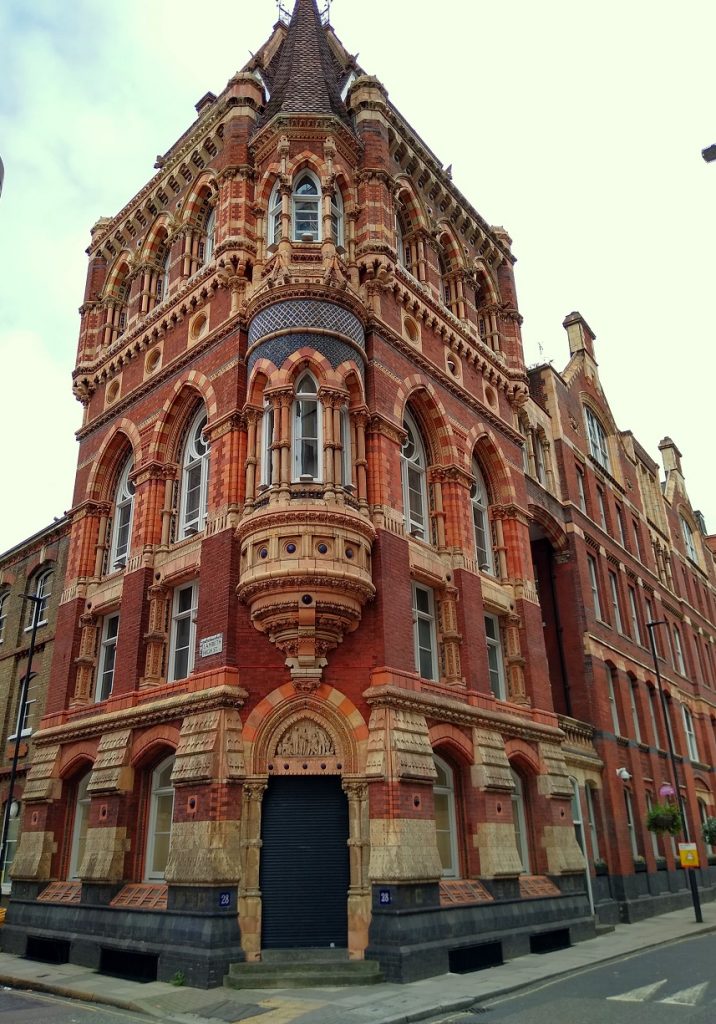
Just for the record, if you want to visit in person (or virtually on Google Street View) you want the corner of Back Prince Road and Lambeth High Street. You can’t miss it. It’s a local landmark, honest.
Was it worth the search? – Very much so
So what’s all the fuss about? Well as you can see from the photos, the outside of the building is covered in ornamentation that just cries out Doulton. To me it looks like a completely over the top Gothic church in tile and brick. The semi-circular bay above the door looks for all the world like one of their late 19th century water filters. I can’t imagine it went unnoticed that the arches above the windows formed of alternating colours recall the arches of the mosque in Cordoba. Above and below the windows the courses of ornamental bricks leave almost no space undecorated.
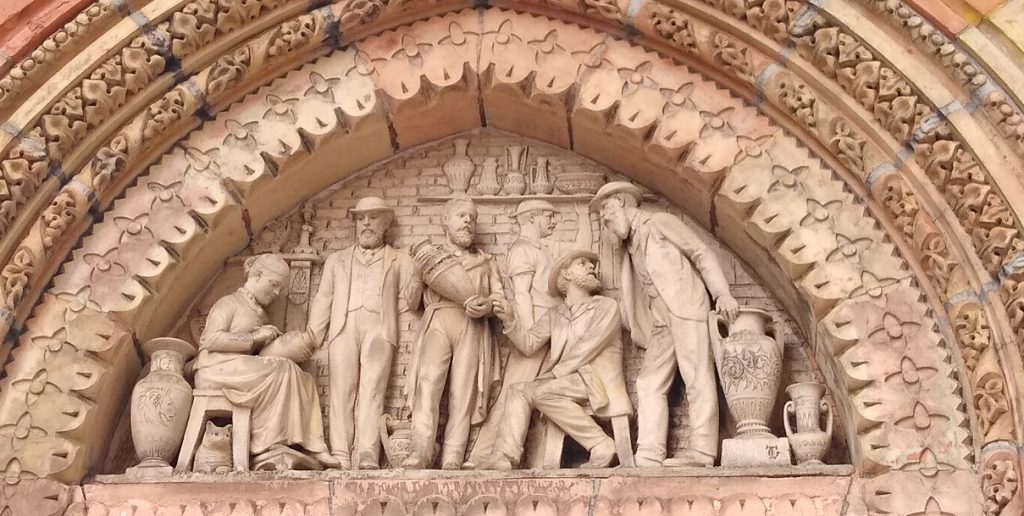
On the street corner is the undoubted high point. Above the door is a tympanum relief by George Tinworth, one of the great designers at Doulton. Apparently it is called ‘Mr Doulton in his Studio’. You can tell who it’s by, there on the base of the vase at the bottom right hand corner with the very typical George Tinworth seaweed pattern is George’s “GT” monograph. I’ve was once told he was never one for being shy and was the only artist at Doulton who was permitted to sign his work on the side rather than the bottom, although I’ve since seen examples of Hannah Barlow’s work where she has done the same.
For fans of Hannah Barlow, that’s her on the left, next to the vase with a lion on it. If you still need convincing it’s Hannah, she’s usually depicted with a cat. That will be her cat under the chair. By a very pleasing coincidence, we own a vase by Hannah Barlow with lions on it (more about that some other time). I wonder why George Tinworth depicted a lion rather than one of Hannah’s more usual subjects such as a donkey, horse or sheep.
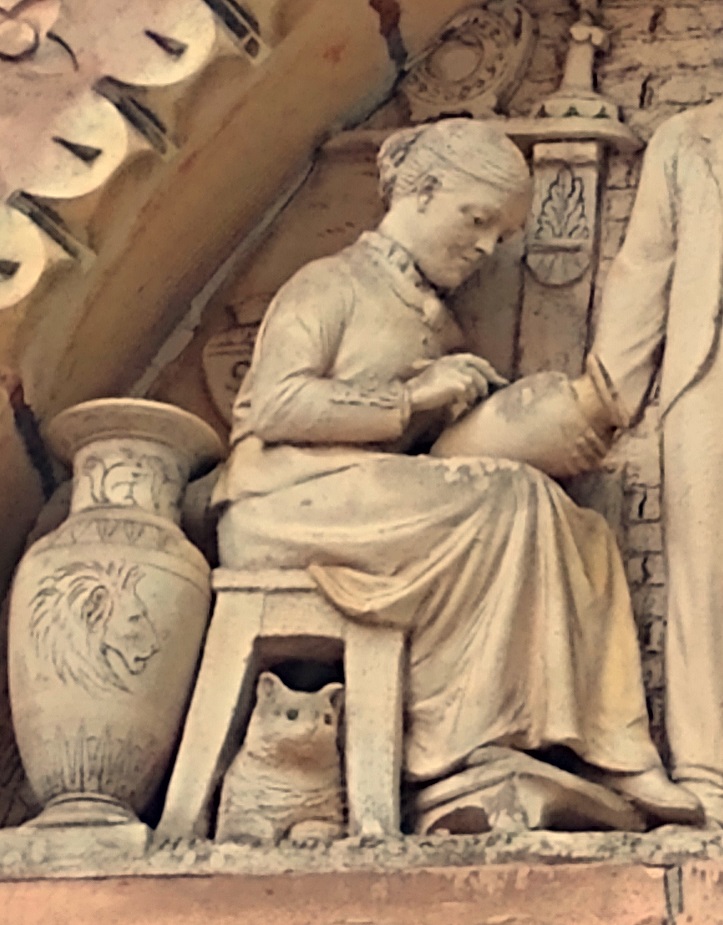
Although not signed, the tiles in these photographs again show very typical George Tinworth seaweed patterns. Whilst you have to pay several thousand pounds for his famous mouse and frog groupings, George Tinworth’s vases decorated with swirling seaweed patterns can be picked up for a few hundred pounds.
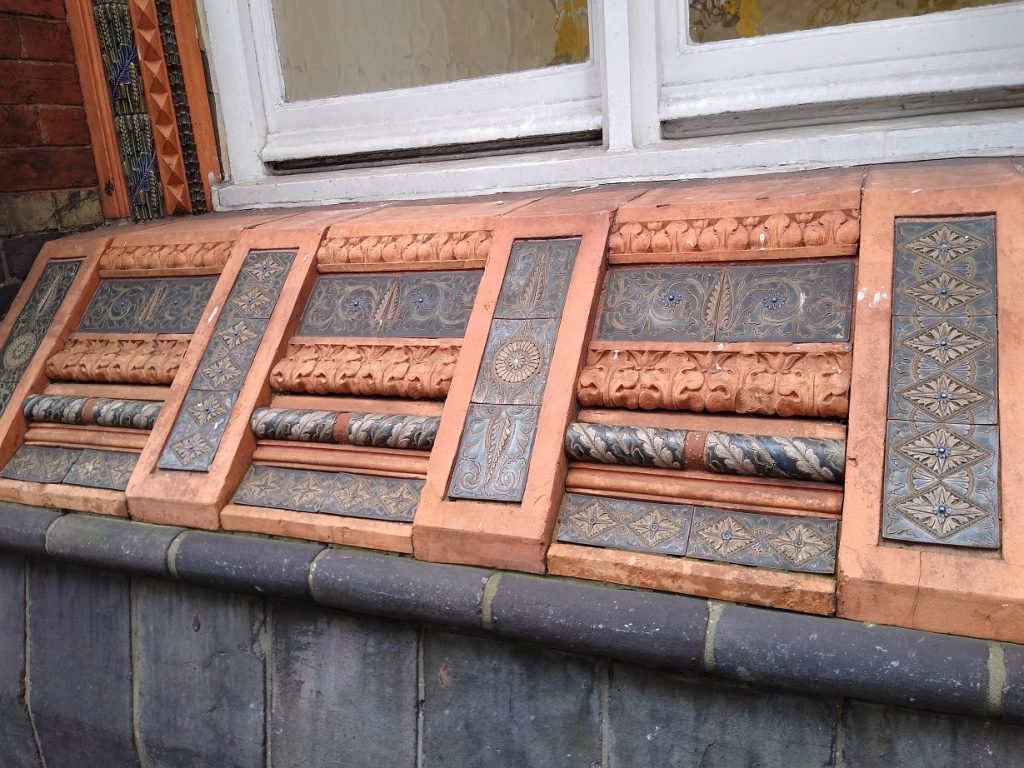
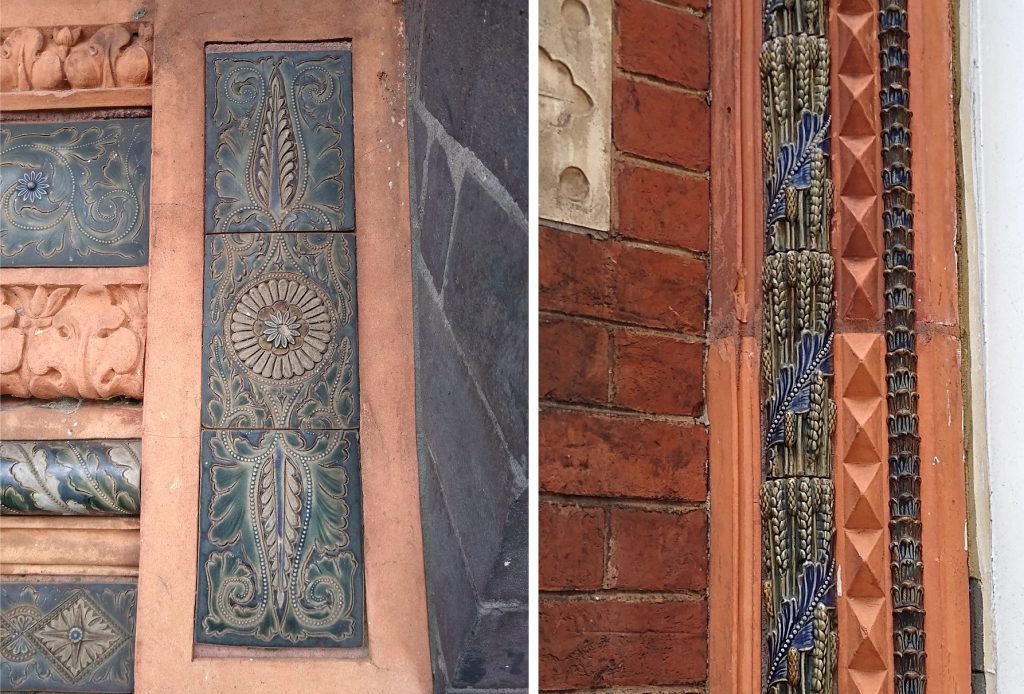
This part of the building was apparently a shop or at least a “shop front” and the wide range of tiles was intended as a display of the items that could be purchased. I’ve not seen many examples come up at auction which is a shame as they are clearly things of beauty in themselves. I guess they were put into fire places and then as fashioned changed they got ripped out and ended up as landfill. A very depressing thought.
On a more cheerful note, the building has obviously been cleaned and looks to be cared for. It’s pleasing to see that even the tiles down at street level have survived unmolested. It says a lot for the durability of the ceramics. The building must be quite a survivor, especially given how close it is to the river, the area being very heavily damaged during the Second World War. It must make the locals very proud as they walk past each day….